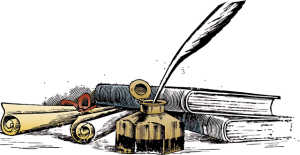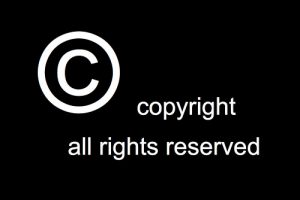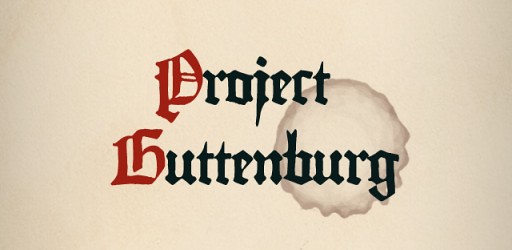Quill and Ink
The earliest form of writing that is closest to the pen and paper we have today was developed by the Greeks (Bellis). They created writing styluses out of bone, metal or ivory, predating the quill by about 200 years. The quill was introduced in about the year 700 CE and dominated the writing scene for thousands of years (Bellis). The quill is made from a bird’s feather and is strongest when plucked while the bird is alive. Typically, the feather is plucked from a “robust bird” (Tillotson) such as a goose. The left wing of the bird was favor because the curvature of the feather was more ideal for a right-handed person (Bellis). A good quality quill can be used for about a week before it must be replaced and must be sharpened by a special knife, this is where the term pen-knife comes from (Bellis).
The make the pen “it was usual to cut back the plume of the feather and remove the barb, or feathery bits” (Tillotson). This process makes the quill easier to write with and hold. The quill was then placed in hot sand to strengthen the barrel and a pen-knife was used to remove the point (Tillotson). This allowed the scribe to hollow out the inside of the quill and sharpen the nib. The quill was very fragile and became dull easily, which was an issue when the quill was first invented because of the expense of vellum.

Ink was invented by a Chinese philosopher and by 1200 BCE was a common place item in the world. Originally ink was made from the ashes of pine needles, lamp oil, and a gelatin mixture from donkey skin (Bellis). A more stable ink compound was later invented, made from composites of iron-salt, nutgalls, and gum.
The impact made by the invention of the quill and ink can still be seen today. The invention of the Greek styluses, Roman reeds, nibs, and quills ran parallel to the invention of paper. As paper quickly changed and become more commonplace, simpler writing implements were created. The quill was invented in response to the invention of fibrous paper in China which was easier to make and less expensive than vellum and animal skins. Once paper became more easily accessible, people needed a faster, more reliable implement to write with. As paper processes were perfected and paper was made widely available around the 14th century by paper mills in Europe, the art of writing with a quill became more wide spread and easily accessible to the general population. The mechanics of the quill have been perfected and were eventually replaced with a more sturdy and trustworthy implement, the steel nibbled pen (Tillotson) around 1822 (Quill Pen [00:00:19]). By the 1800s education rates had also increased significantly and more convenient forms of writing were needed which led to the steel nibbled pen and more stable ink. The modern-day ball-point pen still uses many of the same mechanics as the quill pen, with a longer life span, varieties of ink colors, and better reliability.
Work Cited:
Bellis, Mary. “A Brief History of Writing.” About, 13 Aug. 2016, inventors.about.com/od/timelines/fl/A-Brief-History-of-Writing.htm. Accessed 23 Feb. 2017.
Quill Pen: How to Make Everything: Book. Produced by Andy George, YouTube, https://youtu.be/eDbtJOjFv7s, 2015.
Ashreila, Writing, Nov. 17, 2015, accessed Feb. 23, 2017
Tillotson, Dianne, Dr. “The Quill Pen.” Medieval Writing, 11 July 2011, medievalwriting.50megs.com/tools/quill.htm. Accessed 23 Feb. 2017.
Copyright

Copyright issues became a problem as printable media became widespread. Without any laws to protect information, anyone could claim that your book was theirs or your research was their research. Copyright laws have changed the way we can use information and was made significant “by waves of innovation in information technology” (Jaszi). Though the creation of the law was not in response to technology but driven by “social life, economic organization, and cultural outlook” (Jaszi).
Britain was the first to propose a law to protect information with the Statute of Anne. The Statute of Anne was first put into law in 1710 (Jaszi), it was the first law of its kind which became standardized and made international. The statute guaranteed authors of new books a “copyright of fourteen years from publication” (Gomez-Arostegui [Pg. 1249]). It was also the first law of its kind to recognize that by creating a way to protect published information, it would encourage people, especially scientists and artists, to publish their work, thereby growing the industry.
The Statute of Anne inspired the US to create the Copyright Act of 1790 stating that “to promote the progress of science and useful arts, by securing for limited times to authors and inventors the exclusive right to their respective writings and discoveries.” (Katz). The US granted authors the right to print, reprint, and publish their work for fourteen years and renew for another fourteen (Katz), which, like the Statute of Anne, was designed to give authors, artists, and scientists incentive and limit their monopoly on the information.
The Statute of Anne and the Copyright Act of 1790 only protected the authors of those countries. In 1891, the International Copyright Act of 1891, more commonly known as the Chace Act, began the process of providing foreigners protection, it provided that “so long as they complied with the US notice, registration, and deposit of requirements” foreigners could obtain US copyrights for their work (Nimmer).
Originally, copyright laws were used for incentive but today, copyright law “has now become a suit of nearly impenetrable armor that allows copyright-holders to block new works from entering the culture and to dictate how older works fit into our cultural framework” (Hlinak). People use copyright to hold a monopoly over a particular idea, character, or plot. Today, we see this with many of the superhero movies.  Now that DC and MARVEL have become popular in not only comics but movies and TV, the companies are buying back the rights to certain characters that they once sold, such as MARVEL selling Spiderman to Sony. It has taken years for them to regain the copyright over the character and they are only regaining it due to the copyright expiring. Another place we see copyright blocks is for marching bands. Bands have to buy the rights to the songs they use and this can cost thousands of dollars. This makes it difficult for bands with small budgets to succeed. This also becomes an issue when looking at Fandoms. Fandoms create artwork, fanfiction, and alternative universes using characters from books, movies, and TV, copyrights certainly come into question when we look at these and authors/artists must put disclaimers on their work to protect themselves.
Now that DC and MARVEL have become popular in not only comics but movies and TV, the companies are buying back the rights to certain characters that they once sold, such as MARVEL selling Spiderman to Sony. It has taken years for them to regain the copyright over the character and they are only regaining it due to the copyright expiring. Another place we see copyright blocks is for marching bands. Bands have to buy the rights to the songs they use and this can cost thousands of dollars. This makes it difficult for bands with small budgets to succeed. This also becomes an issue when looking at Fandoms. Fandoms create artwork, fanfiction, and alternative universes using characters from books, movies, and TV, copyrights certainly come into question when we look at these and authors/artists must put disclaimers on their work to protect themselves.
Work Cited:
Gomez-Arostegui, H. Thomas. “The Untold Story of the First Copyright Suit under the Statute of Anne in 1710.” Berkeley Technology Law Journal, vol. 25, no. 3, June 2010. Berkeley Technology Law Journal, scholarship.law.berkeley.edu/cgi/viewcontent.cgi?article=1853&context=btlj. Accessed 23 Feb. 2017.
Jaszi, Peter, et al. “The Statute of Anne: Today and Tomorrow.” Houston Law Review, vol. 47, no4, Dec. 2010, pp 1013-1021. EBSCOhost. Exproxy.stevenson.edu/login?url=http://search.ebscohost.com/login.aspx?direct=true&db=a9h&an=59250718&site-eds-live&scope=site
Katz, Stanley, editor. “Copyright Timeline: A History of Copyright in the United States.” Association of Research Libraries, 2014, www.arl.org/focus-areas/copyright-ip/2486-copyright-timeline#.WK8wOlXyvIU. Accessed 23 Feb. 2017.
Nimmer, David. “Nation, Duration, Violation, Harmonization: An International Copyright Proposal for the United States.” Duke Law, 21 Mar. 1991, scholarship.law.duke.edu/cgi/viewcontent.cgi?article=4145&context=lcp. Accessed 23 Feb. 2017.
Hlinak, Matt. “The Impact of Modern Copyright Law on the Creation of Derivative Literary Works.” Review. Communication Law Review, Northwestern University, 14 May 2006, commlawreview.org/Archives/v8i1/The%20Impact%20of%20Modern%20v8i1.pdf. Accessed 28 Feb. 2017.
Marvel Studios Logo. JPG file.
Seyfang, Mike. Copyright. 11 Nov. 2008, JPG file. Accessed 28, Feb. 2017.
Project Gutenberg

Project Gutenberg was the first provider of free electronic books (ebooks) created in 1971 by Michael Hart. It was used to encourage the creation and distribution of ebooks. The idea behind Project Gutenberg was the idea of “Replicator Technology”, which essentially means that once a book is on line, it can be replicated as many times as need demands, creating an infinite supply of that book and can be stored anywhere (Hart). The ebooks created by Project Gutenberg are made in the most simple forms to use and are readily available, which allows for any device to run and search the files.
Texts are made to be 99.9% accurate, according to Hart, and does not create authoritative editions of the texts and editing is up to the preferences of the proofreaders (Hart). It is more important to create something easy to use that everyone has access to than to create something completely accurate.
Project Gutenberg’s philosophy of “Replicator Technology” has become wide spread. Amazon, Barnes and Nobel, and other companies have taken advantage of this idea to create an infinite supply of books and media for people to use and enjoy. This idea has become so popular that we now have audiobooks available the same way, both abridged and unabridged. Hart’s philosophy has also expanded into music where we now have programs like iTunes, Spotify, and other programs that allow people access to thousands of artists and albums. While not all of these are free to use, many offer “discounted” prices on their products.
With the invention of eBooks, copyright laws have become somewhat easier to manage. Copyrights must be filed with the US Copyright Office, paperwork must be filled out, and a fee must be paid (Lovett). The danger of eBook publishing is people impersonate original authors and publish their work as their own. Originality is easy to prove with word processors which give the exact time and date stamp of the original document.
Works Cited:
Hart, Michael. “The History and Philosophy of Project Gutenberg.” Project Gutenberg, 7 Apr. 2010, www.gutenberg.org/wiki/Gutenberg:The_History_and_Philosophy_of_Project_Gutenberg_by_Michael_Hart. Accessed 23 Feb. 2017.
Lovett, Anita. “When to Copyright your eBook.” Anita Lovett & Associates, 18 June 2015, anitalovett.com/2015/06/18/when-to-copyright-your-ebook/. Accessed 28 Feb. 2017.
Sauers, Michael. Project Gutenberg, 26 Aug. 2014, JPG file. Accessed Feb. 23, 2017
